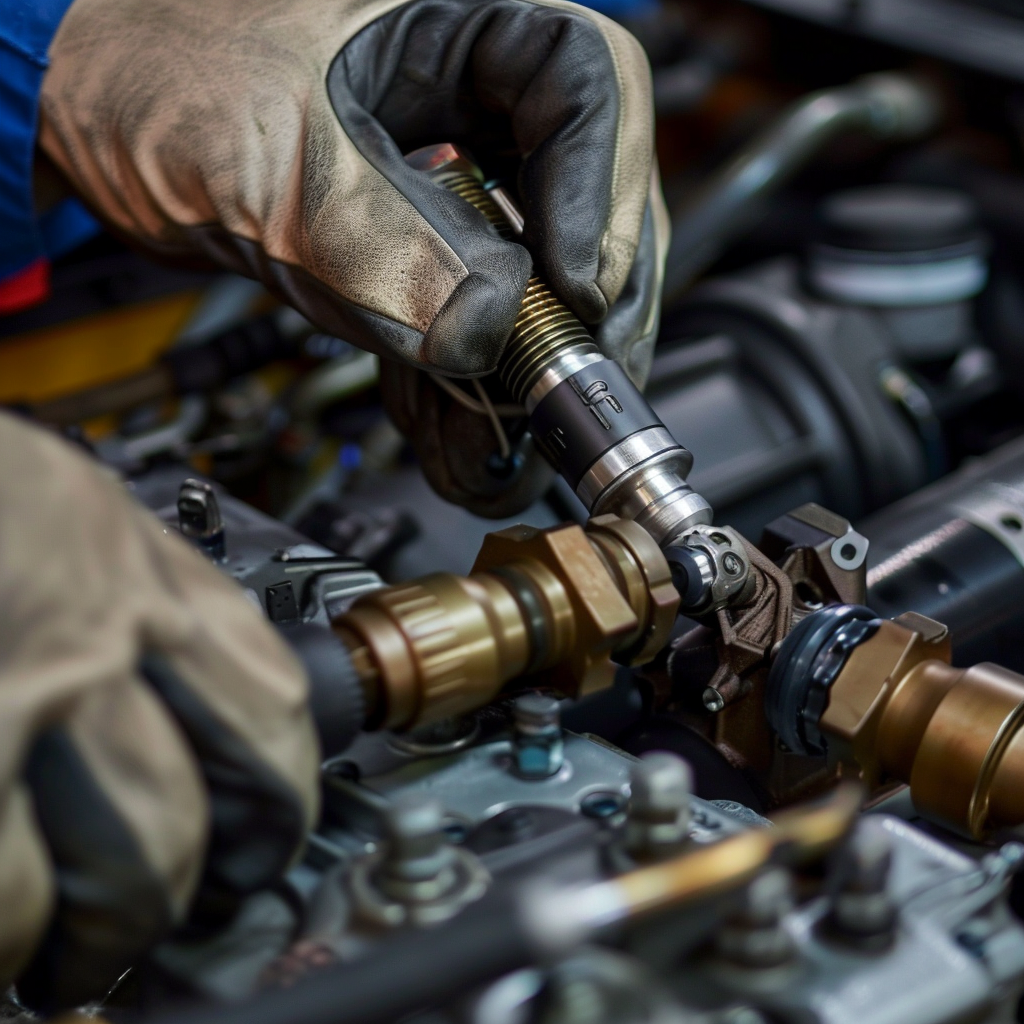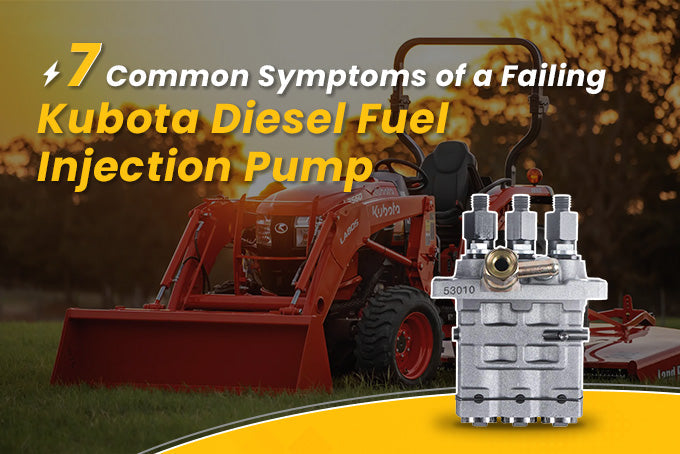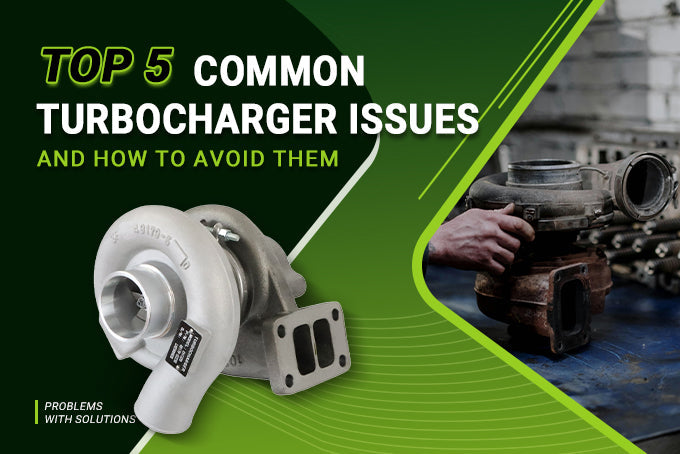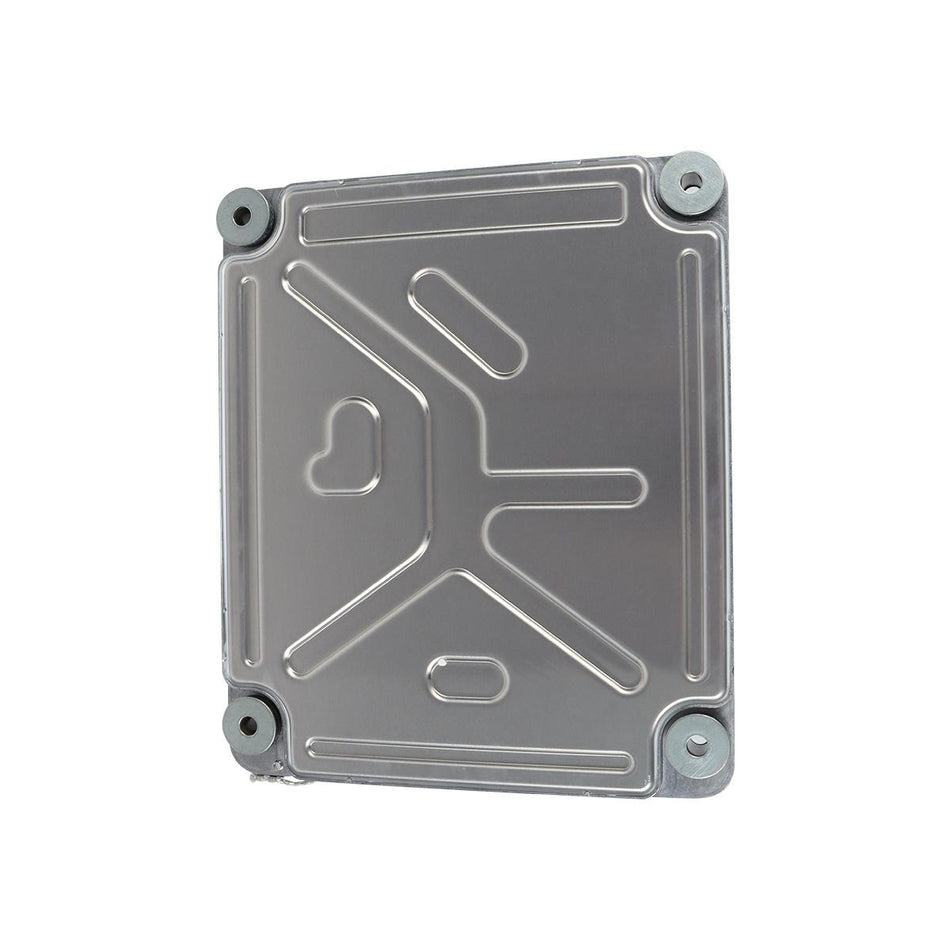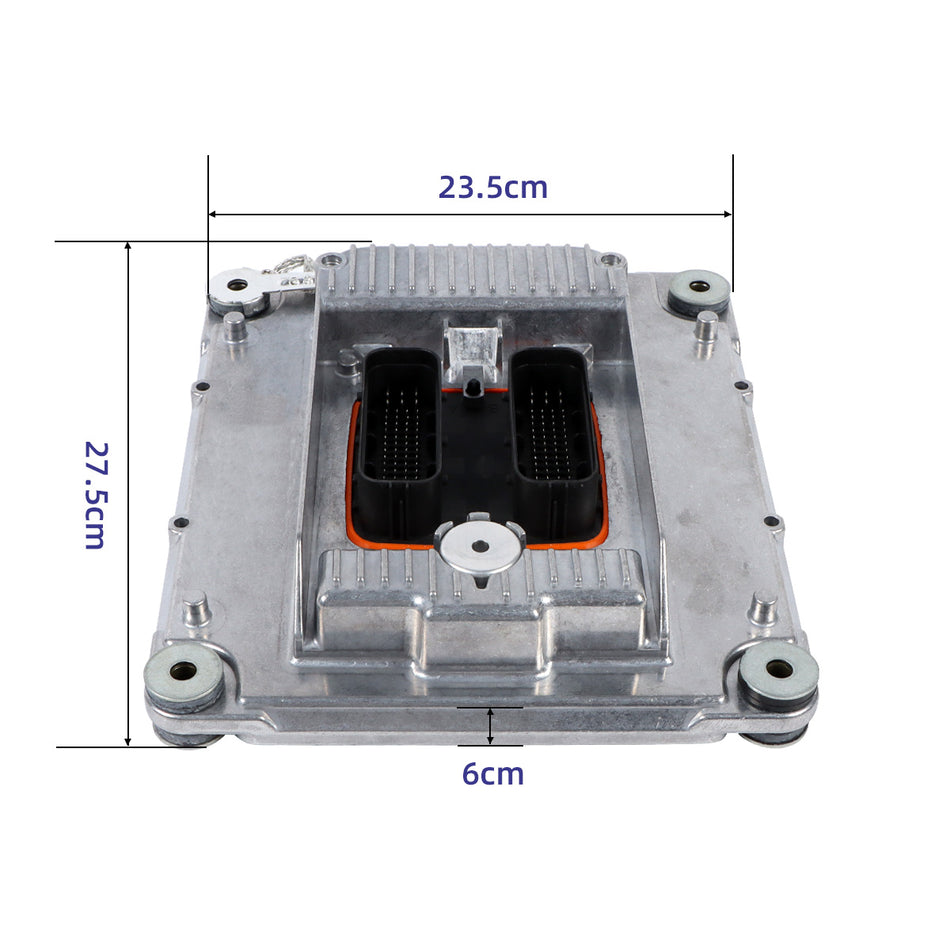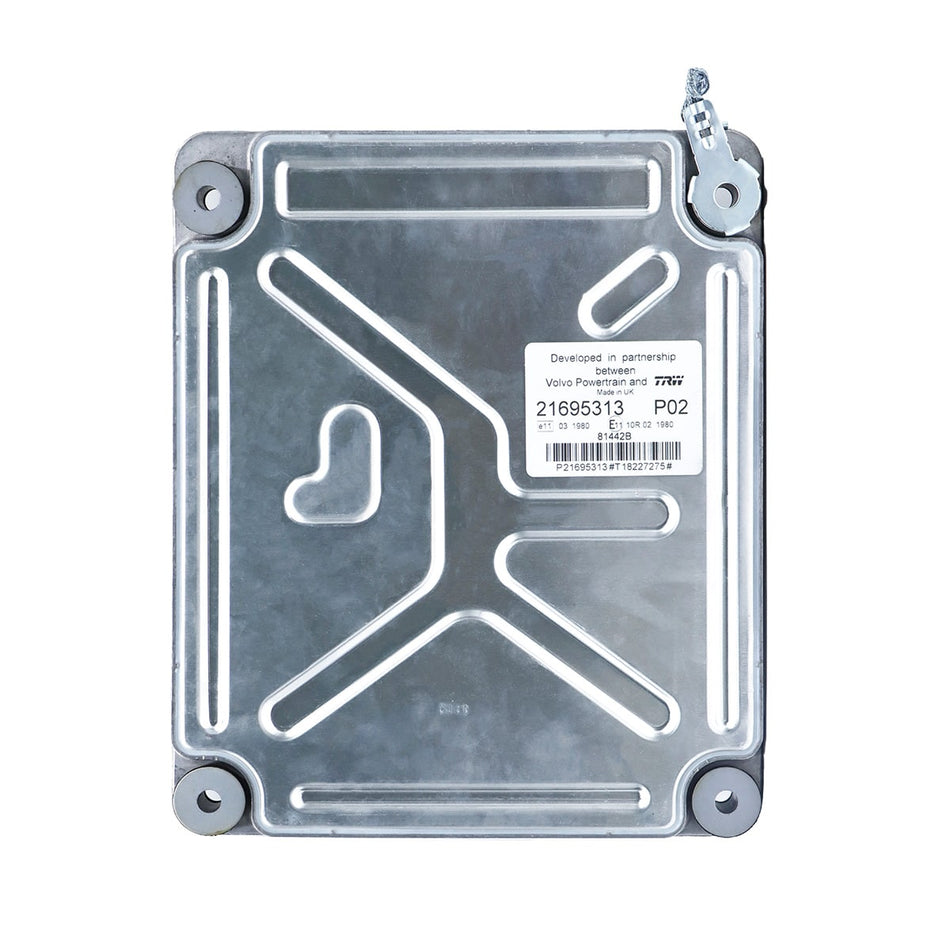Overview of Duramax Injectors
Duramax injectors are essential components in diesel engines, with various types tailored for specific models like the LBZ. Here's a detailed look at Duramax injector types and their applications in vehicles such as the GMC 3500:
Types of Duramax Injectors:
-
LBZ Injectors: Specifically designed for 2006 to 2007 Chevrolet Silverado/GMC Sierra models, LBZ injectors are considered an upgrade over previous models. They offer improved performance, better fuel delivery, and enhanced emissions control.
-
LLY Injectors: Found in 2004.5 to 2005 Chevrolet Silverado/GMC Sierra models, LLY injectors are known for their efficiency and power. However, they can be susceptible to issues like injector harness chafing and overheating.
-
LB7 Injectors: Used in 2001 to 2004 Chevrolet Silverado/GMC Sierra models, LB7 injectors had known issues with cracking, leading to fuel leaks. They were also prone to injector harness problems.
-
LMM Injectors: Found in 2007.5 to 2010 Chevrolet Silverado/GMC Sierra models, LMM injectors were equipped with a diesel particulate filter (DPF) system for emissions control.
Applications in Vehicles like GMC 3500:
Duramax injectors are commonly used in various General Motors (GM) vehicles, including:
- Chevrolet Silverado 2500HD and 3500HD
- GMC Sierra 2500HD and 3500HD
- Chevrolet Express/GMC Savana vans
- Chevrolet Kodiak/GMC TopKick medium-duty trucks
- Various commercial vehicles and chassis cab trucks
How Long Do Duramax Injectors Last
Duramax engines are known for their durability and power, and the injectors play a crucial role in their performance. Here's a breakdown of the types of Duramax injectors, including the LBZ, and their lifespan:
Types of Duramax Injectors:
-
LBZ Injectors:
- Lifespan: On average, LBZ injectors can last between 100,000 to 150,000 miles under normal driving conditions. However, this lifespan can vary based on maintenance, fuel quality, and driving habits.
-
LLY Injectors:
- Lifespan: LLY injectors typically last between 100,000 to 150,000 miles, similar to LBZ injectors. Regular maintenance and fuel quality can impact their longevity.
-
LB7 Injectors:
- compared to later models. They may last around 100,000 miles, but issues with cracking and fuel leaks were common, impacting their longevity.
-
LMM Injectors:
- Lifespan: LMM injectors can also last between 100,000 to 150,000 miles under normal conditions.
Factors Affecting Lifespan:
The lifespan of Duramax injectors, including the LBZ, is influenced by several factors:
- Maintenance: Regular maintenance, including fuel filter changes and injector cleaning, can extend their lifespan.
- Fuel Quality: High-quality diesel fuel and additives can help prevent injector issues.
- Driving Conditions: Heavy towing or frequent idling can put more strain on injectors.
Conclusion:
Duramax injectors, such as the LBZ, LLY, LB7, and LMM models, have varying lifespans depending on the model and driving conditions. LBZ injectors, for example, can last between 100,000 to 150,000 miles. Proper maintenance, fuel quality, and driving habits can help extend their lifespan. Understanding the types and compatibility of Duramax injectors is essential for maintaining optimal engine performance and longevity.
How Many Injectors Are in a 6.6 Duramax
A 6.6 Duramax engine typically has eight injectors. This includes one injector per cylinder in the V8 configuration. Each injector is responsible for delivering fuel into the combustion chamber at the precise moment and in the correct amount to ensure optimal engine performance. These injectors play a crucial role in the diesel combustion process, contributing to power output, fuel efficiency, and emissions control. It's important to ensure these injectors are properly maintained and functioning correctly for the engine to operate at its best.
How to Check Duramax Injector Balance Rates
Checking the balance rates of Duramax injectors is an important maintenance task to ensure proper engine performance. Here's a step-by-step guide on how to check the balance rates:
What You'll Need:
- OBD-II scanner or diagnostic tool compatible with Duramax
- Access to the vehicle's OBD-II port
Steps to Check Duramax Injector Balance Rates:
-
Prepare the Vehicle:
- Park the vehicle on a flat surface and ensure the engine is turned off.
- Locate the vehicle's OBD-II port, usually located under the dashboard on the driver's side.
-
Connect the OBD-II Scanner:
- Plug the OBD-II scanner into the vehicle's OBD-II port.
- Turn the ignition key to the "On" position without starting the engine. This will power up the scanner.
-
Access Injector Balance Rates:
- Use the OBD-II scanner to access the engine control module (ECM) or powertrain control module (PCM) menu.
- Look for an option to view injector balance rates. This may vary depending on the scanner, but it is typically found under "Live Data" or "Injector Control Pressure (ICP)" menu.
-
Read the Balance Rates:
- Once you've accessed the injector balance rates, you'll see a list of values for each injector.
- The balance rates should ideally be within +/- 4 for all injectors. If an injector's balance rate is significantly outside this range, it may indicate an issue with that injector.
-
Interpret the Results:
- A positive balance rate indicates that the injector is delivering more fuel than commanded, while a negative balance rate means it's delivering less.
- If you notice a significant deviation in balance rates between injectors, it could indicate a problem with one or more injectors.
-
Compare Results:
- Compare the balance rates of each injector to identify any outliers.
- Note down any injectors with balance rates outside the acceptable range for further inspection or potential replacement.
-
Repeat if Necessary:
- You can repeat the process multiple times to ensure accurate readings.
- If there are consistent balance rate issues, it's recommended to have a professional mechanic further diagnose the injectors.
How Much Does it Cost to Check Duramax Injector Balance Rates?
The cost to check the injector balance rates of a Duramax engine can vary. If you have your own OBD-II scanner, the cost is essentially the price of the scanner. OBD-II scanners range from $20 for basic models to $200 or more for professional-grade scanners with advanced features.
If you don't have a scanner, you can visit a mechanic or an auto parts store that offers diagnostic services. They may charge a fee for scanning and retrieving the balance rates. Prices for this service can range from $50 to $150 or more, depending on the location and the provider.
Checking the balance rates of Duramax injectors is an important diagnostic step to ensure proper engine performance and identify potential injector issues early on.
How to Clean Duramax Injectors
Cleaning Duramax injectors is an important maintenance task that can help improve engine performance and fuel efficiency. Here's a step-by-step guide on how to clean Duramax injectors:
What You'll Need:
- Fuel injector cleaner (compatible with diesel engines)
- Fuel system cleaner additive
- Basic hand tools
- Safety glasses
- Gloves
Steps to Clean Duramax Injectors:
-
Prepare the Vehicle:
- Park the vehicle in a well-ventilated area and turn off the engine.
- Wear safety glasses and gloves for protection.
-
Locate the Fuel Injector Ports:
- The fuel injectors are typically located on the fuel rail along the top of the engine.
- If necessary, refer to the vehicle's service manual to locate the fuel injectors.
-
Add Fuel System Cleaner:
- Pour a bottle of diesel fuel system cleaner into the vehicle's fuel tank.
- Follow the manufacturer's instructions on the amount to use based on the tank size.
-
Run the Engine:
- Start the engine and let it idle for about 10 minutes to allow the cleaner to circulate through the fuel system.
- This will help dissolve carbon deposits and clean the injectors.
-
Perform a Hard Acceleration:
- After idling, take the vehicle for a drive and perform a few hard accelerations.
- This will help flush out any loosened deposits from the injectors.
-
Check Injector Balance Rates (Optional):
- If you have access to an OBD-II scanner, you can check the injector balance rates after cleaning to ensure they are within acceptable limits.
- Refer to the previous guide on "How to Check Duramax Injector Balance Rates" for instructions.
-
Repeat if Necessary:
- If the injectors were heavily clogged or if you notice improved performance but not optimal, you may consider repeating the cleaning process.
Professional Cleaning:
If the injectors are severely clogged or the DIY cleaning did not yield satisfactory results, you may opt for professional cleaning services. A professional fuel injector cleaning service typically involves using specialized equipment and solutions to thoroughly clean the injectors.
Tips for Preventing Injector Build-Up:
- Use high-quality diesel fuel and additives that contain detergents to help prevent injector build-up.
- Follow the manufacturer's recommended maintenance schedule for fuel filter changes.
- Avoid running the fuel tank low, as sediment can accumulate and clog the injectors.
Important Safety Precautions:
- Always wear safety glasses and gloves when working with fuel and fuel additives.
- Work in a well-ventilated area to avoid inhaling fumes.
- Ensure the engine is cool before starting any work.
Cleaning Duramax injectors can be an effective way to maintain engine performance and prolong injector life. If you're unsure about performing the cleaning yourself, consult with a professional mechanic for assistance.
Rebuilding Duramax injectors can be a cost-effective way to restore performance and efficiency to your engine. Here's a step-by-step guide on how to rebuild Duramax injectors:
What You'll Need:
- Rebuild kit for Duramax injectors (available from aftermarket suppliers)
- Injector removal tool
- Clean rags
- Safety glasses
- Gloves
- Injector test bench (optional but recommended)
- Torque wrench
- Basic hand tools
Steps to Rebuild Duramax Injectors:
-
Remove the Injectors:
- Start by removing the fuel injectors from the engine. This usually involves removing the valve covers and any components blocking access to the injectors.
- Use an injector removal tool to carefully extract each injector from the cylinder head.
-
Disassemble the Injectors:
- Once the injectors are removed, carefully disassemble them.
- Use caution to avoid damaging delicate components.
- Keep track of each part as you disassemble, as they will need to be reassembled in the correct order.
-
Inspect the Components:
- Thoroughly inspect each component for signs of wear, damage, or buildup.
- Common issues to look for include worn nozzle tips, damaged seals, and clogged passages.
- If any parts are severely worn or damaged, they should be replaced with parts from the rebuild kit.
-
Clean the Components:
- Use a suitable solvent or injector cleaning solution to clean all components thoroughly.
- Pay special attention to the injector nozzles, ensuring they are free from carbon deposits and buildup.
- Use clean rags to wipe down each component until they are completely clean.
-
Replace Seals and O-Rings:
- The rebuild kit will include new seals, O-rings, and other necessary gaskets.
- Carefully replace all seals and O-rings on the injectors, ensuring a proper fit and seal.
-
Reassemble the Injectors:
- Begin reassembly by carefully reassembling the injectors in the reverse order of disassembly.
- Make sure each component is properly aligned and seated.
- Follow the manufacturer's instructions included with the rebuild kit for proper assembly.
-
Test the Injectors:
- Before reinstalling the injectors, it's crucial to test them for proper operation.
- If you have access to an injector test bench, use it to test each injector's spray pattern, fuel delivery rate, and leakage.
- This step ensures the injectors are functioning correctly before putting them back into the engine.
-
Reinstall the Injectors:
- Once the injectors have been rebuilt and tested, carefully reinstall them back into the engine.
- Use a torque wrench to tighten the injector hold-down bolts to the manufacturer's specifications.
- Reinstall any components that were removed to access the injectors.
-
Final Inspection and Start-Up:
- Perform a final visual inspection to ensure all connections are secure and components are properly installed.
- Start the engine and monitor for any unusual noises or issues.
- Check for fuel leaks around the injectors and verify that the engine is running smoothly.
Professional Assistance:
Rebuilding Duramax injectors can be a complex process, and if you're not confident in your abilities, it's recommended to seek the assistance of a professional mechanic. They will have the expertise and specialized tools needed to properly rebuild and test the injectors.
Safety Precautions:
- Always wear safety glasses and gloves when working with fuel and fuel system components.
- Work in a well-ventilated area to avoid inhaling fumes.
- Ensure the engine is cool before starting any work.
By following these steps, you can rebuild Duramax injectors to restore engine performance and efficiency.
How to Test Duramax Injectors
Testing Duramax injectors is a crucial step in diagnosing engine performance issues. Here's a guide on how to test Duramax injectors:
What You'll Need:
- OBD-II scanner or diagnostic tool compatible with Duramax
- Injector testing kit (optional but recommended)
- Safety glasses
- Gloves
- Access to the vehicle's OBD-II port
Steps to Test Duramax Injectors:
-
Prepare the Vehicle:
- Park the vehicle on a flat surface and turn off the engine.
- Wear safety glasses and gloves for protection.
-
Connect the OBD-II Scanner:
- Plug the OBD-II scanner into the vehicle's OBD-II port.
- Turn the ignition key to the "On" position without starting the engine. This will power up the scanner.
-
Access Injector Data:
- Use the OBD-II scanner to access the engine control module (ECM) or powertrain control module (PCM) menu.
- Look for an option to view injector data or balance rates. This may vary depending on the scanner, but it is typically found under "Live Data" or "Injector Control Pressure (ICP)" menu.
-
Read the Injector Data:
- Once you've accessed the injector data, you'll see a list of values for each injector.
- The balance rates should ideally be within +/- 4 for all injectors. If an injector's balance rate is significantly outside this range, it may indicate an issue with that injector.
- Note down the balance rates for each injector for reference.
-
Perform a Contribution Test:
- Many OBD-II scanners have a feature to perform a contribution test on the injectors.
- This test will deactivate each injector in sequence, allowing you to observe any changes in engine performance.
- Follow the scanner's prompts to perform the contribution test.
-
Inspect for Smoke or Fuel Leaks:
- With the engine running, visually inspect the area around each injector for signs of smoke or fuel leaks.
- Smoke or fuel leaks can indicate a faulty injector that is not sealing properly.
-
Use an Injector Testing Kit (Optional):
- If you have access to an injector testing kit, you can perform a more thorough test.
- Follow the manufacturer's instructions for the specific testing kit.
- This may involve removing the injectors and testing them on a bench to check spray pattern, fuel delivery rate, and leakage.
-
Interpret the Results:
- Based on the balance rates, contribution test results, and visual inspection, you can determine if any injectors are faulty.
- A significant deviation in balance rates, poor performance during the contribution test, or visible signs of smoke or leaks indicate a problem.
-
Replace or Repair Faulty Injectors:
- If you identify a faulty injector, it should be replaced or repaired.
- Replacement injectors can be purchased from aftermarket suppliers, and installation is typically straightforward.
- If you have the skills and equipment, you may be able to rebuild the injector instead of replacing it.
-
Re-test (Optional):
- After replacing or repairing the injector, you can re-test it to ensure proper function.
- Reconnect the OBD-II scanner and recheck the balance rates and contribution test results.
- If everything is within acceptable limits, the injector is functioning correctly.
Professional Assistance:
If you're not comfortable performing injector testing yourself, it's recommended to seek the assistance of a professional mechanic. They will have the expertise and specialized equipment needed to accurately diagnose and test Duramax injectors.
Safety Precautions:
- Always wear safety glasses and gloves when working with fuel and fuel system components.
- Work in a well-ventilated area to avoid inhaling fumes.
- Ensure the engine is cool before starting any work.
By following these steps, you can effectively test Duramax injectors to diagnose engine performance issues and ensure proper operation.
How to Check for Bad Injector on Duramax
Checking for a bad injector on a Duramax engine involves a few steps to identify potential issues. Here's a guide on how to check for a bad injector:
What You'll Need:
- OBD-II scanner or diagnostic tool compatible with Duramax
- Safety glasses
- Gloves
- Access to the vehicle's OBD-II port
Steps to Check for a Bad Injector:
-
Prepare the Vehicle:
- Park the vehicle on a flat surface and turn off the engine.
- Wear safety glasses and gloves for protection.
-
Connect the OBD-II Scanner:
- Plug the OBD-II scanner into the vehicle's OBD-II port.
- Turn the ignition key to the "On" position without starting the engine. This will power up the scanner.
-
Access Injector Data:
- Use the OBD-II scanner to access the engine control module (ECM) or powertrain control module (PCM) menu.
- Look for an option to view injector data or balance rates. This may vary depending on the scanner, but it is typically found under "Live Data" or "Injector Control Pressure (ICP)" menu.
-
Read the Injector Data:
- Once you've accessed the injector data, you'll see a list of values for each injector.
- The balance rates should ideally be within +/- 4 for all injectors. If an injector's balance rate is significantly outside this range, it may indicate a problem with that injector.
- Note down the balance rates for each injector for reference.
-
Perform a Contribution Test:
- Many OBD-II scanners have a feature to perform a contribution test on the injectors.
- This test will deactivate each injector in sequence, allowing you to observe any changes in engine performance.
- Follow the scanner's prompts to perform the contribution test.
-
Inspect for Smoke or Fuel Leaks:
- With the engine running, visually inspect the area around each injector for signs of smoke or fuel leaks.
- Smoke or fuel leaks can indicate a faulty injector that is not sealing properly.
-
Listen for Engine Misfires:
- While the engine is running, listen for any irregularities in engine idle or operation.
- A bad injector can cause rough idling, engine misfires, or hesitation during acceleration.
-
Check for Check Engine Light Codes:
- If the vehicle's check engine light is on, use the OBD-II scanner to retrieve any diagnostic trouble codes (DTCs).
- Specific codes related to injector performance, such as P0261 to P0288, can indicate injector issues.
-
Perform a Power Balance Test (Optional):
- Some diagnostic tools allow for a power balance test, which provides a graphical representation of each cylinder's contribution to engine power.
- A significant drop in power contribution from one cylinder compared to others can indicate a bad injector.
-
Consult a Professional Mechanic:
- If you suspect a bad injector but are unsure or unable to perform the tests yourself, it's best to consult a professional mechanic.
- They have the expertise and equipment to perform more detailed diagnostics and accurately identify injector problems.
Professional Assistance:
If you're not comfortable performing these tests yourself or if you suspect a bad injector based on the results, it's recommended to seek the assistance of a professional mechanic. They will have the expertise and specialized equipment needed to accurately diagnose and repair Duramax injectors.
Safety Precautions:
- Always wear safety glasses and gloves when working with fuel and fuel system components.
- Work in a well-ventilated area to avoid inhaling fumes.
- Ensure the engine is cool before starting any work.
By following these steps and using an OBD-II scanner, you can check for a bad injector on a Duramax engine. Remember to interpret the results carefully and seek professional help if needed for accurate diagnosis and repair.
What are signs of bad injector Duramax?
Duramax engines are known for their durability and performance, but like any vehicle component, injectors can wear out over time. Here are the signs to look out for that may indicate a bad injector in your Duramax:
-
Rough Idle: A common symptom of a failing injector is a rough or inconsistent idle. You may notice the engine shaking or vibrating more than usual when at a standstill.
-
Engine Misfires: Bad injectors can lead to engine misfires, causing the engine to run unevenly. This may result in hesitation, jerking, or a loss of power during acceleration.
-
Hard Starting: If an injector is not delivering fuel properly, it can make starting the engine difficult, especially when cold.
-
Reduced Engine Performance: A failing injector can cause a decrease in engine performance, such as reduced power output, sluggish acceleration, or poor fuel efficiency.
-
Excessive Exhaust Smoke: A bad injector can result in excessive black smoke coming from the exhaust, particularly during acceleration. This indicates an overly rich fuel mixture.
-
Fuel Odor: If you detect a strong fuel odor inside or outside the vehicle, it could be a sign of a leaking injector.
-
Check Engine Light: A faulty injector can trigger the check engine light on the dashboard. Use an OBD-II scanner to retrieve any related trouble codes.
-
Engine Knocking or Pinging: Improperly functioning injectors can lead to engine knocking or pinging noises, especially under load or when accelerating.
-
Poor Fuel Economy: A sudden drop in fuel efficiency without other obvious issues could be due to a bad injector not delivering fuel efficiently.
-
Visible Leaks or Wetness: Inspect the area around the injectors for signs of fuel leaks or wetness. Leaking injectors can cause fuel to pool around the injector.
Conclusion
If you notice any combination of these symptoms in your Duramax engine, it's crucial to have the injectors inspected and tested by a professional mechanic. Ignoring a bad injector can lead to further engine damage and decreased performance. A mechanic can use diagnostic tools to identify the specific injector causing issues and recommend the necessary repairs or replacements.
By staying attentive to these signs, you can catch injector problems early and keep your Duramax engine running smoothly and efficiently.


